Early in the nineteenth century the wealthy merchant, Nurullabeg ('Nurulla the rich') owned a fine plot of land to the west of the Bakcha Darvasa which Mohammed Rakhim Khan coveted as the perfect spot for a new palace. Negotiations took place and Nurullabeg agreed to sell his land on the condition that subsequent buildings on the site were named after him. The merchant got his wish and the palace bears his name to this day.
The Nurullabeg Palace proved a popular residence for the Khan's namesake, Mohammed Rakhim Khan II, who eventually died here from a heart attack. He was suceeded by his son, Isfandir Khan, who, unluckily enough, also met his demise here, this time at the hands of his rival, the Turkoman Junaid Khan.
Shortly after Isfandir's death, the palace became the centre of government for the newly proclaimed People's Republic of Khorezm. Its great halls were filled with idealistic young men holding council and discussing politics. Among them was a young lad called Hamza who went on to become the first Soviet poet of Uzbekistan and a much venerated hero with a metro station named after him in Tashkent. It was a time of great change when revolutionary young women defiantly burned their veils and posed barefaced and bold for photographs in a palace which once held the Khan's harem.
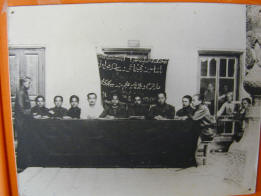 Early Revolutionary Council
Early Revolutionary Council
Today the Nurullabeg Palace moulders in a state of quiet disrepair. The various courtyards can be accessed through the main gates and the original ganch decorating can still be seen crumbling from the walls in some of the rooms. Although largely empty, the palace holds the offices of the Khiva Handicraft Centre and has a few rooms where women can be seen weaving carpets and kilims. There is also a shop within the office containing a wide selection of souvenirs at fixed prices which are generally far cheaper than those in the Ichan Kala.
A reception hall and other administrative buildings were constructed in the surrounding grounds by Isfandir Khan in 1912. Their design and interior reflects increasing foreign influence with spacious windows, large doors and even a series of specially commissioned heaters decorated with the finest china tiles from St Petersburg. These cost a gold coin each and were fuelled by saksoul wood, a desert tree producing dense wood that creates a mildly narcotic haze when burnt.
By Isfandir Khan's reign, the Mennonite community in neighbouring Okh Majit had established their reputation as fine craftsmen and were commissioned to decorate the reception hall using ganch and plasterwork. They did a fine job of the main hall, the smaller guest rooms and an octagonal conservatory with particularly stunning ganchwork, even including images of cherubs and living things (generally prohibited by Islam) on some of the ceilings.
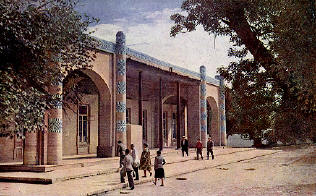 View during the 1970s
View during the 1970s
After the dissolution of the Khanate, the reception hall was the location for the unveiling of the first statue of Lenin in Central Asia. The hall again rose to prominence in the 1960's becoming the city's showpiece for Soviet achievement when Khiva opened up to receive tourists. Since independence the statue of Lenin has been replaced with a hastily assembled bust of Mohammed Rakhim Khan II while the reception hall is used as a museum and a venue for the occasional international conference.
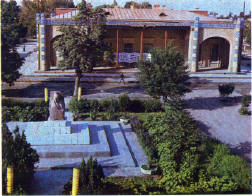 Central Asia's first Lenin statue
Central Asia's first Lenin statue
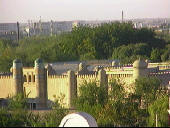
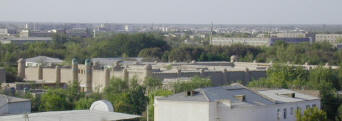
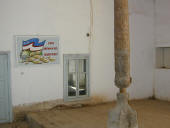
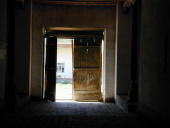
 Early Revolutionary Council
Early Revolutionary Council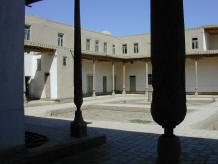
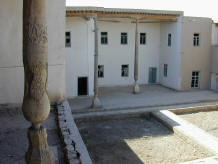
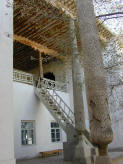
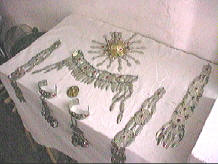
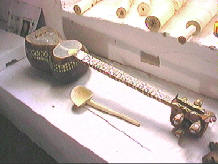
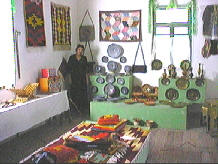
 View during the 1970s
View during the 1970s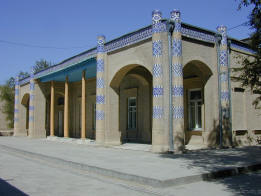
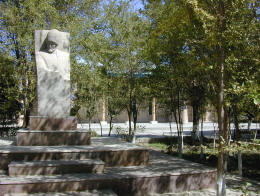
 Central Asia's first Lenin statue
Central Asia's first Lenin statue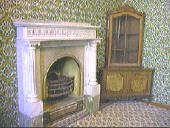
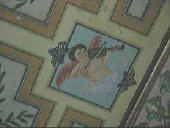
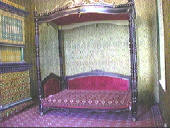
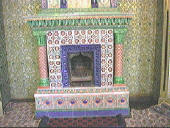
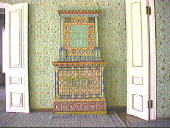
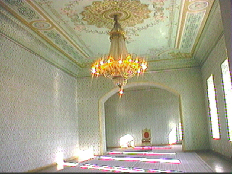





 Early Revolutionary Council
Early Revolutionary Council





 View during the 1970s
View during the 1970s

 Central Asia's first Lenin statue
Central Asia's first Lenin statue




